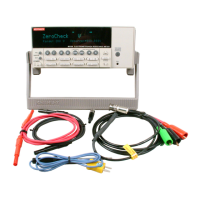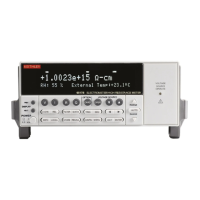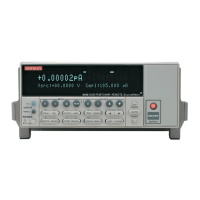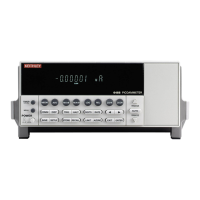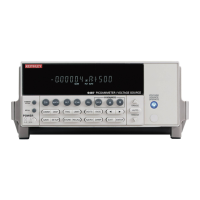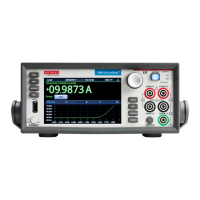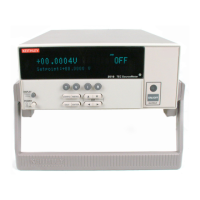10-4 Limit Tests
NOTES Display messages indicate which test or tests have failed, but they do not indicate
which limit (HI or LO) has failed. When using remote operation, you can determine
which limit failed by reading the measurement event register. See Ref B for the FAIL?
commands in Table 10-2.
Relative (Rel), mX+b and percent can be used with limit testing. The tests will be done
on the result of the math operation (not the input values). These math operations are
covered in Section 7.
Application — A typical application for a 2-stage limit test is to sort a batch of DUT accord-
ing to tolerance. For example, you may want to sort resistors (all having the same nominal value)
into three groups, 1%, 5%, and >5%. The limits for limit 1 would be the 5% tolerances, and the
limits for limit 2 would be the 1% tolerances. If a resistor passes both tests, it belongs in the 1%
group. If it passes limit 1, but fails limit 2, it belongs in the 5% group. If it fails both tests, it
belongs in the >5% group.
Binning
Even though no additional equipment is required to perform limit tests on the DUT, Model
6514 can be used with a component handler to perform binning operations. Based on the out-
come of a test, the component handler will place the DUT in the assigned bin.
Figure 10-4 shows a basic binning system. After all programmed testing on the DUT is com-
pleted, the appropriate digital output pattern is sent to the component handler, which then places
the DUT in the appropriate bin. The component handler selects the next DUT, and the testing
process is repeated.
Handler
Dig
In
DUT
HI LO
Input
Dig
I/O
6514
Figure 10-4
Binning system
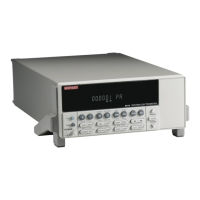
